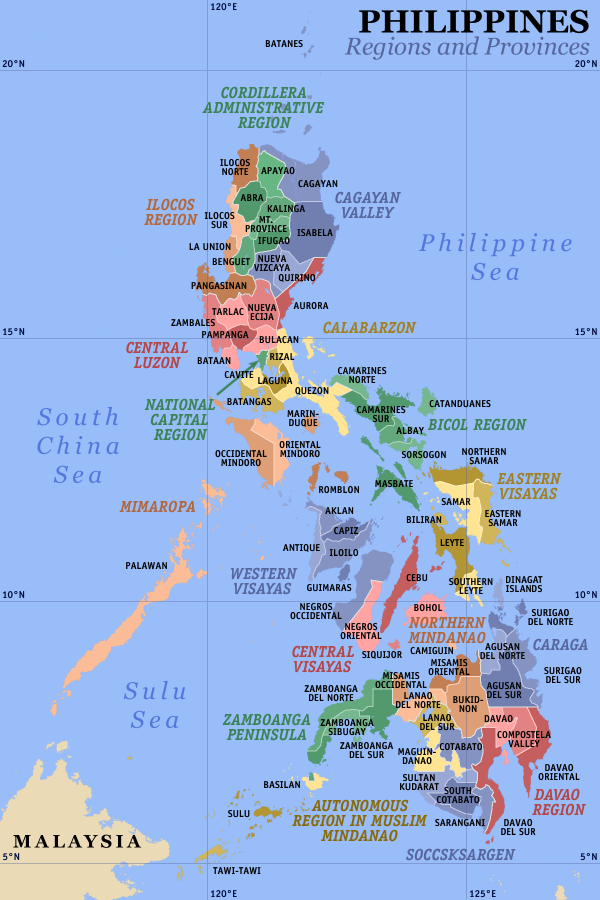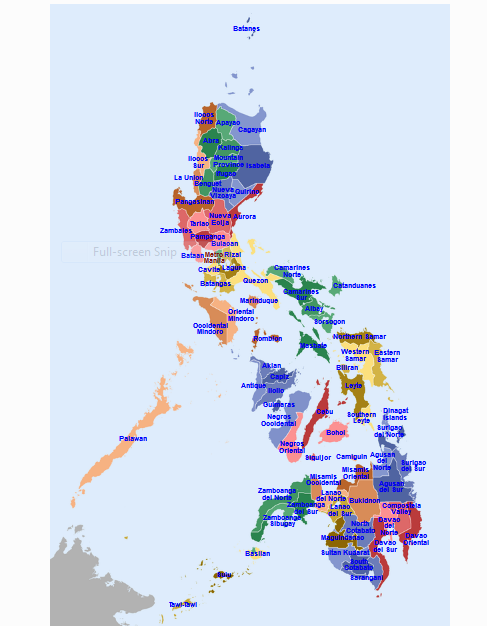Cavite suburban lifestyles. Our name says it all. Whether you
are moving here for the first time or have lived here for years,
we will not only assist you with the buying and selling of your
home, but to help you appreciate the exceptional lifestyle of
this picturesque area.
About Cavite
Brief History
The province´s name is derived from the Tagalog word kawit, meaning
"hook", which refers to the shape of the peninsula. This place was a
port of Spanish vessels, including the galleons from Mexico.
Colonizers arriving in the late 16th century saw an unusual tongue
of land thrust into Manila Bay and saw its value as the main
staging ground from where they could launch their bulky galleons.
Formed in the shape of a hook, which in Tagalog is called kawit ,
it became the most important port linking the colony to the outside
world.
What is now Cavite City was once a mooring place for Chinese
junks trading that came to trade with the settlements around
Manila Bay. In 1571, Spanish colonizers founded the port and city
of Cavite and fortified the settlement as a first line of defense for
the city of Manila. Galleons were built and fitted at the port and
many Chinese merchants settled in the communities of Bacoor
and Kawit, opposite the Spanish city to trade silks, porcelain and
other Oriental goods. The vibrant mix of traders, Spanish seamen
and local residents gave rise to the use of pidgin Spanish called
chabacano.
In 1614, the politico-military jurisdiction of Cavite was
established covering all the present territory except for the
town of Maragondon, which used to belong to the corregimiento
of Mariveles. Maragondon was ceded to Cavite in 1754. Within
Maragondon was a settlement established in 1663 for Christian
exiles from Ternate, Mollucas.
Owing to its military importance, Cavite was attacked by
foreigners in their quest to conquer Manila and the Philippines.
The Dutch made a surprise attack on the city in 1647, founding the
port incessantly, but were repulsed. In 1672, the British
occupied the port during their two-year interregnum in the
Philippines. American forces attacked the Spanish squadron in
Cavite. The Spanish defeat marked the end of Spanish rule in the
country.
Missionary orders acquired and enlarged vast haciendas in Cavite
during the 18th and 19th century. These haciendas became the
source of bitter agrarian conflicts between the friar orders and
Filipino farmers and pushed a number of Cavitenos to live as outlaws.
This opposition to the friar orders was an important factor that drove
many Cavite residents to support reform, and later, independence.
In 1872, a mutiny by disgruntled navy men in Cavite led to a
large-scale crackdown on reformers and liberals. Three Filipino
priests – Jose Burgos, Mariano Gomez and Jacinto Zamora- were
executed and dozens others sent into exile. In 1896, after the
outbreak of the Philippine Revolution, Cavite took center stage as
thousands of Katipuneros liberated most of the province's towns.
On August 26, 1896, when the Philippine revolution against Spain
broke out, Cavite became a bloody theatre war. Led by Emilio
Aguinaldo, Cavitenos made surprise attacks on the Spanish
headquarters and soon liberated the whole province.
Emilio Aguinaldo, the first Philippine president came from the town of
Kawit and directed the conduct of the Revolution from his base in the
province. He agreed to go into exile in December 1897, but returned
to the Philippines in May 1898. On June 12, he declared Philippine
independence from the balcony of his home in Kawit.
The Americans established civil government in the province in 1901.
The naval station in Sangley Point became the chief American naval
base in the country.
The Japanese targeted the naval base during the first wave of attacks
on military installations in the Philippines.
Cavite and its people, what they are today, and what will be tomorrow
will remain their infinity, as a place with a glorious history, and a
people fortified with strength to live and die for a worthy cause.
| Land Area |
: 1,426.06 km2 |
| Capital |
: Imus (P.D.1163) |
| Income Class |
: First Class |
| Congressional District |
: 7 |
| Cities |
: 4 |
| Municipalities |
: 19 |
| Number of Barangays |
: 829 (Pres. Proc. No. 28) |
| Seat of Provincial Government |
: Trece Martirez City |
| Provincial Governor |
: Hon. Juanito Victor "Jonvic" C. Remulla Jr. |
| Business Address |
: 1st Floor Cavite Provincial Capitol Building
San Agustin, Trece Martirez City 4109
Cavite Province, Philippines |
| Contact Number |
: +63 46 4191919 |
| Provincial Website |
: www.cavite.gov.ph/home |
| Human Resource (Projected) |
: |
| 2008 Population |
: 2,987,891 |
| Population Density |
: 2,094 person/km2 |
| Number of Households |
: 617, 843 |
| Growth Rate |
: 4.59% |
| Total Labor Force |
: 1,131,215 |
| Employment Rate |
: 84.40 |
| Employed Labor Force |
: 954,745 |
| Literacy Rate |
: 96.52% |
| Number of Private Hospital |
: 40 |
| Number of Government Hospital |
: 12 |
| Vital Health Indices |
|
| Infant Mortality Rate |
: 5.43% |
| Maternity Mortality Rate |
: 22.19% |
| Crude Death Rate |
: 3.16% |
| Crude Birth Rate |
: 20.41% |
| Number of Economic Zones |
: 46 |
| Number of Industrial Establishments |
: 768 |
|
| Number of Operating Cooperatives |
: 242 |
| |
|
| Number of Enterprises |
: 12, 128 |
| Micro Enterprises |
: 12, 207 |
| Small Enterprises |
: 51 |
| Medium Enterprises |
: 31 |
| Large Enterprises |
: 19 |
| |
|
| Number of Banking Institutions |
: 271 |
| Rural Banks |
: 72 |
| Commercial Banks |
: 127 |
| Thrift Banks |
: 71 |
Specialized Government
Bank |
: 1 |
| |
|
| Number of None-Banking Institutions |
: 694 |
| Financing Companies |
: 1 |
| Pownshops |
: 688 |
Non-Stock & Saving &
Loans Associations |
: 5 |
| |
|
| Products |
: Foods: Coffee, Cocoa Tablets, Kaong Vinegar, Tahong Chips, Smoked Fish,
and other Processed Seafoods,
Processed Fruits and Vegetables,
Milk and Milk Products, Native
Delicacies etc.
Bamboo Products: Novelties and
Furnitures
Ceramics, Bags, Wallets, Novelty
Items, Scented Candles, Virgin Coconut
Oil |
| |
|
| Climate |
: Relatively Dry Season from November
to April
Wet Season from May to October |
|
Map of Cavite

Cavite is one of the five (5) provinces composing the Calabarzon
Region of the Republic of the Philippines.

Calabarson is one of the seventeen (17) regions of the Republic of the
Philippines

Cavite is the twentythird (23) province of the eighty (80) provinces of the
Republic of the Philippines, as shown in the map below.

Cavite is under Type 1 Climate bracket as shown in the climate map
below. Two pronounced seasons. Dry from Noveember to April, wet
during the rest of the year.

Quick Facts
(http://www.cavite.gov.ph/)
| Land Area |
: |
1,427.06 km2 |
| Capital |
: |
Imus (P.D.1163) |
| Income Class |
: |
First Class |
| Congressional District |
: |
7 |
| Cities |
: |
4 |
| Municipalities |
: |
19 |
| No. of Barangays |
: |
829 (Pres. Proc. No. 28) |
| Seat of Provincial Government |
: |
Trece Martires City |
| Provincial Governor |
: |
Hon. Juanito Victor "Jonvic" C.
Remulla, Jr. |
| |
Business Address |
: |
2nd Floor Cavite Provincial Capitol
Bldg. |
| |
|
|
San Agustin, Trece Martires City 4109 |
| |
|
|
|
Why Invest in Cavite?
(http://www.cavite.gov.ph./)
1. Strategic Location
a. Cavite is proximate to the country’s urban center and to the
country’s international gateways.
b. With six major entry and exit points; going in and out of Cavite is easy.
c. Cavite has a good road network; moving from one town to another
place within the province is only a short distance drive.
2. Good Climate
In general, climate condition in the province all throughout the year is
ideal for both business and relaxation. Cavite has two pronounced
seasons: relatively dry from November to April, and wet from May
to October. Our warmest months are March, April, May , June and
July with an average temperature of 28.8oCelsius. Our coolest months
are January, February and December with an average temperature
of 25.8oCelsius.
3. Generally Ideal Peace and Order Situation
The generally ideal peace and order situation in the province is
sustained thru the Cavite-Philippine National Police program on
increased police visibility particularly along chokepoints during day
time and sustained night watch operations, while industrial peace and
productivity is maintained thru peaceful dialogues and regular meetings
between management and labor which has already been institutionalized
thru organization of Cavite Tripartite Industrial Council (CTIC)
and the creation of Cavite Industrial Peace Advisory Group (CIPAG).
4. Cavite has approved Development Plans
Land in the province is delineated and allocated based on approved
Provincial Physical Framework Plan (PPFP) and Provincial
Development Plans (PDP) - 2005-2010
5. Cavite is rich in human resources
Manpower resources abound in the province. Cavite boasts of its
96.52% literacy rate being a home to 1,760 schools. Prospective
employees could be selected from among the graduates of various
schools located in the province.
6. Cavite has 41 Industrial Zones to which you can conveniently locate
The province fully adheres to the BOI and PEZA policies and
investment incentives for company locators. The steady growth of
company locators in the province is a healthy indicator of sustained
business operations and continuous pouring of investments over the years.
7. Service providers for daily business operations are in place
Power - from the National Power Corporation thru MERALCO
Water Supply - From Ground Water Resources developed by respective
IEs, water services from MAYNILAD and Local Water Districts
Telephone Services (Land-based & Mobile) - From Philippine Long
Distance Company (PLDT), Digital Telecomunications Philippines,
Inc. (DIGITEL), Globe Telecommunications Company, Mobiline,
Express Telecommunications (Nextel), Smart Telecommunications,
Piltel, and Islacom Telecommunication Services - From Radio
Communication of the Phils, Inc. (RCPI), Philippine Telegraph &
Telephone Company (PT&T), LBC & DHL
8. Major Infrastructure projects are being pushed for implementation
and completion to complement rapid urbanization
Infrastructure projects are R-1 Extension, Daang-Hari Road (CALA
East-West Road), North-South Road, CALA Expressway, LRT-1 Extension,
Ternate-Nasugbu Road and Sangley Point Port Development Project.
We commit ourselves to help you find your dream home.
Come and let us help you...
Call:
Filprimehomes
Cell Nos:
Sun +63932-860-8685
Viber +63932-860-8685
Smart +63919-948-6003
Globe +63905-206-3608
Email Address: filprimehomes@yahoo.com
Please add us in your:
YM :filprimehomes
Skype :filprimehomes.Ph
Connect with Us
%20Home_files/divider_dots.gif)
© 2012 FILPRIMEHOMES® All Rights Reserved
|